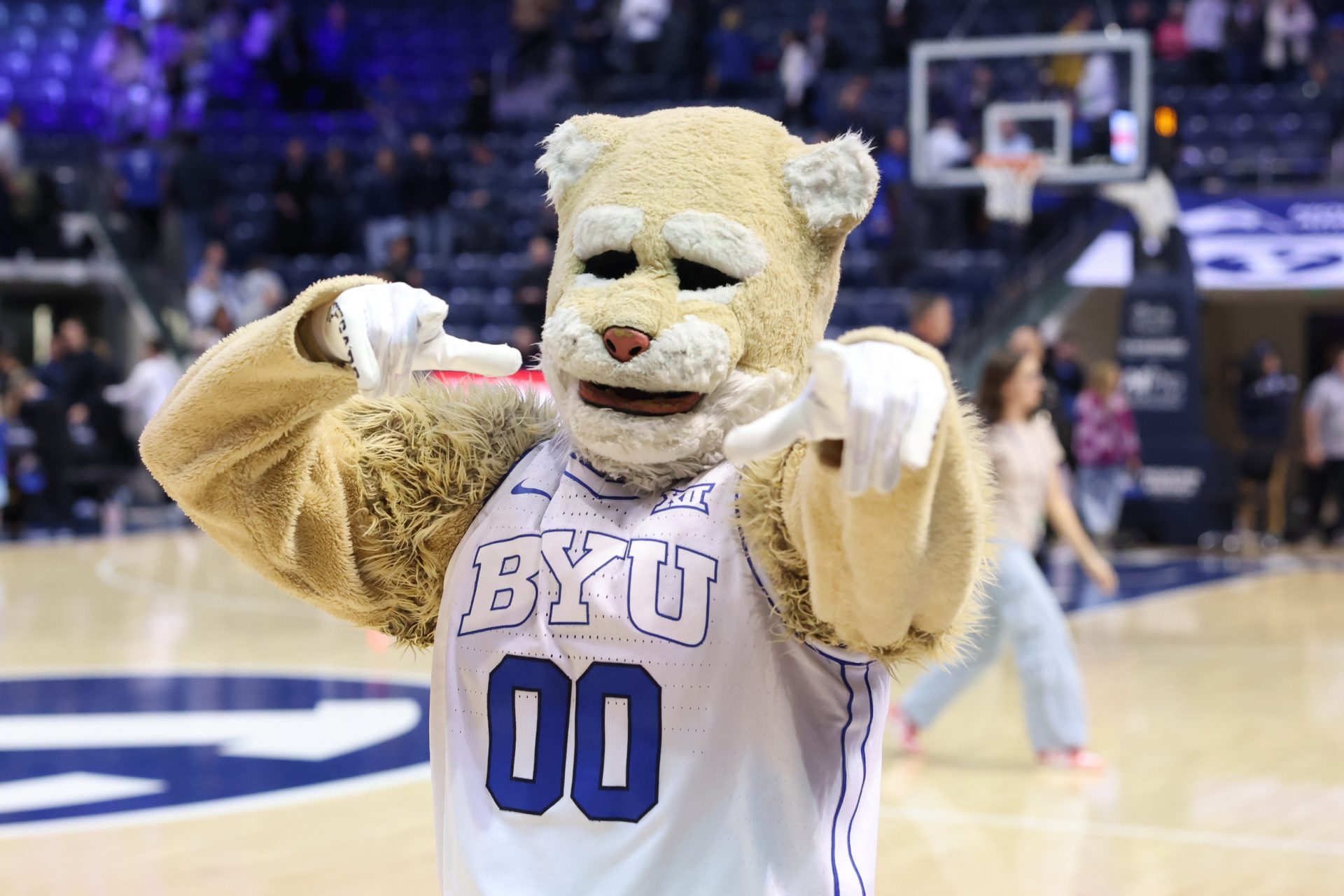College football is unique for a number of reasons, chief among them the pageantry and pride shown for programs by alumni and fans alike. No amount of pageantry would be complete without the role of mascots.
There are over 134 different teams in FBS, with as many varied and different backgrounds as there are teams. Uniquely, BYU is one of five schools represented by the Cougar at the Division I level.
How did the mascot come to be, and in what ways does the history help tell the story that the Cougar now represents? Let’s take a look at the history.

Who (or What) Is the BYU Cougars Mascot?
Founded in 1875, BYU was originally named Brigham Young Academy and did not have an official mascot at the time. Teams were simply recognized as BYA or the shortened “BY” during competition.
In 1923, the school’s name was changed to Brigham Young University, and the athletic teams followed suit and became the “Y Men.” The name lasted only two years but marked the beginning of the school’s true mascot identity.
MORE: Simulate the College Football Season with CFN’s College Football Playoff Predictor
The Cougar mascot was first suggested by Eugene L. Roberts, a coach and athletic director for BYU, in 1924. The suggestion was approved one year later in 1925.
The mascot was suggested due to the attributes of strength, agility, and prevalence in the mountains of Utah.
As has been the case historically with many universities, BYU had several live cougar mascots in the past.
The first was named “Cleo” and was acquired in the 1930s, though there are limited details as to how BYU acquired the cougar.
The live cougars continued to appear at games until the 1960s when concerns over the welfare of the animal and safety led to a discontinuation of the practice.
Why Is the Cougar the Mascot?
As the discourse around live mascots revolved, the introduction of a costumed version of the cougar debuted on Oct. 15, 1953, during a pep rally. The name “Cosmo,” which was short for cosmopolitan, was selected as a nod to the idea that BYU students came from all over the world.
Cosmo’s appearance has evolved significantly over time. Some accounts of the earliest version of the costume describe it as “shabby” and “moth-eaten.”
In the ’70s, a new costume was introduced in line with the era’s tradition. Cosmo was given a more cartoonish look, with large eyes and a goofy grin.
The ’80s saw a return to a more realistic version of a cougar, with a focus on being more fierce.
In the ’90s and 2000s, the costume continued to improve and become more sleek and athletic.
The final redesign occurred in 2015, giving him sharp teeth and claws in addition to other improvements.
Cosmo the Cougar has gained notoriety nationally and especially on social media for elaborate dance performances and acrobatic stunts at various sporting events, specifically basketball and football.
Some of these stunts have included sliding down a giant slide, repelling from the rafters in basketball, aerial flips, fire dancing, and even jumping out of an airplane as part of a marketing initiative.
In 2017, it was revealed that a woman had portrayed Cosmo for the first time in the mascot’s history. This was a headline-making revelation. It broke the long-standing tradition of male-only performers, making it a significant moment in the history of BYU’s mascot.
While the cougar is the mascot, the single letter Y has also become part of BYU’s identity, along with Cosmo. Whereas some schools historically have multiple mascot changes, and some even face controversy, BYU has avoided that for the most part and has continued its longstanding use of the cougar.
Whether on the field of play or performing hair-raising stunts off it, the association of Cosmo, the cougar, and BYU is a recognizable blend of everything that BYU embraces, including the often associated phrase of “Enter to Learn, Go Forth to Serve” — something Cosmo does with regularity.
College Football Network has you covered with the latest news and analysis, rankings, transfer portal information, top 10 returning players, the 2024 college football season schedule, and much more!

